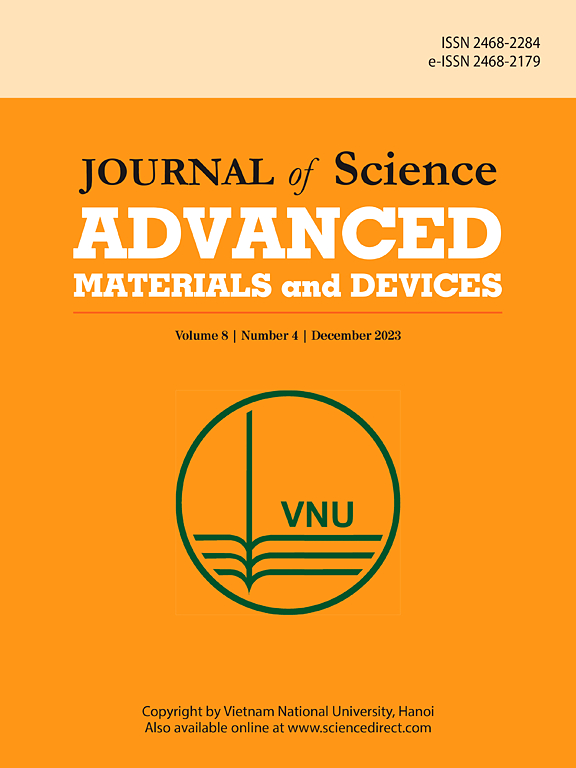Research article: Wideband absorption with polarization and angular insensitive metamaterial for optical applications based on Tungsten-SiO2 composites
IF 6.7
3区 材料科学
Q1 MATERIALS SCIENCE, MULTIDISCIPLINARY
Journal of Science: Advanced Materials and Devices
Pub Date : 2025-03-22
DOI:10.1016/j.jsamd.2025.100878
引用次数: 0
Abstract
Energy harvesting from solar light is a matter of interest nowadays. In this discipline, researchers are attempting to achieve significant success in this field at a low cost and with minimal effort. To harness this solar energy, metamaterial absorbers (MMA) demonstrated a simple new method to collect these electromagnetic (EM) waves for use in solar energy. Furthermore, broadband absorbers are the best alternative for properly using solar energy. In this paper, we propose a shield pattern of Martii-shaped metamaterial absorber with polarization-insensitive for an optical regime made of dielectric material silicon dioxide (SiO2) and the metal tungsten (W), which serves as the top resonant material and back blocking plate. A 96.93 % average absorption rate was found for visible 380 nm–700 nm, along with a maximum peak absorption point at 604.53 nm, which is 99.996 %. Moreover, above 99 % absorption was found for 561.6–650.16 nm, and from 601 to 608 nm, the rate is above 99.99 %. Our MMA exhibits excellent average absorption of 96.27 % throughout the whole operation band range of 360 nm–1200 nm in TE and TM mode. Additionally, it is independent of polarization and incident angle. Its strong absorption and other properties make it well-suited for photonic applications, particularly in solar photovoltaics (PV), sensors etc.
求助全文
约1分钟内获得全文
求助全文
来源期刊

Journal of Science: Advanced Materials and Devices
Materials Science-Electronic, Optical and Magnetic Materials
CiteScore
11.90
自引率
2.50%
发文量
88
审稿时长
47 days
期刊介绍:
In 1985, the Journal of Science was founded as a platform for publishing national and international research papers across various disciplines, including natural sciences, technology, social sciences, and humanities. Over the years, the journal has experienced remarkable growth in terms of quality, size, and scope. Today, it encompasses a diverse range of publications dedicated to academic research.
Considering the rapid expansion of materials science, we are pleased to introduce the Journal of Science: Advanced Materials and Devices. This new addition to our journal series offers researchers an exciting opportunity to publish their work on all aspects of materials science and technology within the esteemed Journal of Science.
With this development, we aim to revolutionize the way research in materials science is expressed and organized, further strengthening our commitment to promoting outstanding research across various scientific and technological fields.
 求助内容:
求助内容: 应助结果提醒方式:
应助结果提醒方式:


